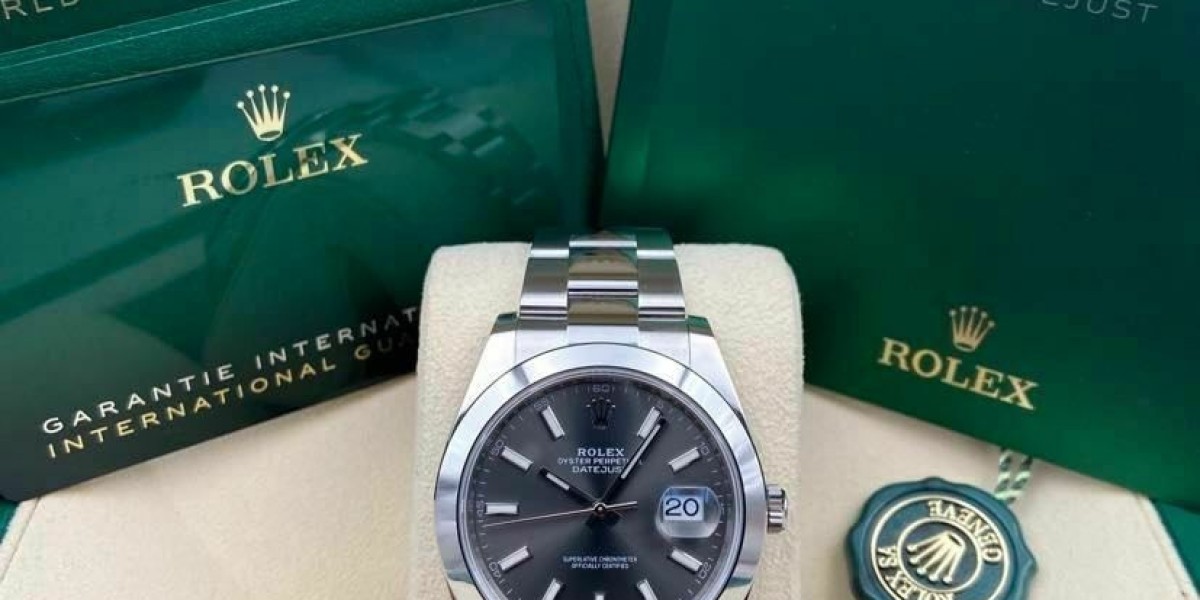Introduction
Replica watches, significantly those modeled after luxury manufacturers like Rolex, have gained immense recognition in recent times. While the outer appearance of these watches might carefully resemble that of the original timepieces, the inner workings, particularly the movement, might differ significantly. In this text, we'll explore the kind of motion generally used in best replica watch (mahmoud-thorup.federatedjournals.com) Rolex watches and discuss its efficiency and functionality.
Forms of Movement in Replica Rolex Watches
The movement or mechanism of a watch is actually the engine that drives the fingers on the dial and powers any extra features, corresponding to a date function or chronograph. There are primarily two forms of movement used in watches: mechanical and quartz.
Mechanical motion is considered the extra conventional and prestigious possibility. It relies on a fancy system of gears, springs, and other parts to regulate the timekeeping. Mechanical movements are further divided into manual and automated varieties. Guide mechanical movements require regular winding by the wearer, sometimes once a day, to maintain the watch running. Then again, automatic mechanical movements are self-winding, drawing energy from the pure movement of the wearer's wrist.
Quartz motion, however, is powered by a battery and depends on an digital oscillator to regulate the timekeeping. Quartz movements are known for their accuracy and low maintenance necessities. They are also usually more reasonably priced in comparison with mechanical movements.
Within the case of replica watches, significantly these imitating luxury brands like Rolex, the motion used is often a quartz motion. This choice is primarily driven by cost issues, as quartz movements are cheaper to produce and maintain. Moreover, the accuracy and reliability of quartz movements make them a well-liked choice among manufacturers of replica watches.
Performance and Performance of Quartz Movement in Replica Rolex Watches
Whereas quartz motion might lack the prestige and craftsmanship of mechanical motion, it gives a number of advantages in terms of performance and performance. Certainly one of the key benefits of quartz movement is its high accuracy. Quartz watches are recognized for his or her exact timekeeping, with deviations of only a few seconds monthly. This level of accuracy is essential for a timepiece to be considered reliable and useful.
Another benefit of quartz movement is its low maintenance requirements. Unlike mechanical movements, which require regular servicing and winding, quartz movements are just about maintenance-free. The battery in a quartz watch usually lasts for a number of years before needing substitute, making it a handy choice for everyday wear.
When it comes to functionality, quartz motion in replica Rolex watches can embody extra options corresponding to a date window, chronograph, or even a GMT operate. These complications can enhance the utility and versatility of the watch, permitting the wearer to trace multiple time zones or measure elapsed time with ease.
Criticism of Quartz Motion in Replica Watches
Despite its benefits, quartz motion in replica watches has confronted some criticism from watch fanatics and purists. One widespread critique is that quartz movement lacks the artistry and craftsmanship of mechanical movement. Traditional watchmaking strategies, similar to hand-finishing and intricate complication designs, are often associated with mechanical movements.
Another criticism of quartz motion is its perceived lack of worth and heritage. Luxury watch brands like Rolex have constructed their popularity on the superior high quality and craftsmanship of their mechanical movements, which are often passed down by generations. In contrast, quartz movement is seen as a more disposable and mass-produced choice.
Conclusion
In conclusion, replica Rolex watches commonly use quartz motion for its affordability, accuracy, and low maintenance requirements. While quartz motion could lack the prestige and craftsmanship of mechanical motion, it offers a number of benefits when it comes to efficiency and performance. Finally, the selection of motion in a watch, whether it's mechanical or quartz, depends on the individual's preferences and priorities.

